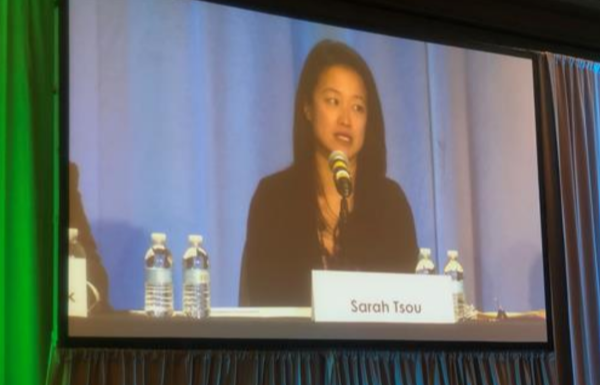An expert’s view: patent litigation and the factors that drive funding

Earlier this year, Bentham IMF made a key hire to help boost the company’s in-house expertise on patent litigation. Sarah Tsou came aboard in January as an investment manager and legal counsel, bringing with her deep experience as a veteran patent litigator and former partner at Kirkland & Ellis LLP.
Tsou has advised clients through a range of complex intellectual property matters and is now helping companies and law firms find ways to leverage the benefits of litigation financing to help support highly meritorious patent cases.
Recently, she spoke with James Batson, head of Bentham’s New York office, on our Beyond Hourly podcast about her work and the benefits of funding in patent litigation. Here are a few key takeaways from that conversation:
- Why funding and patent cases work together so well. One of the reasons patent cases work so well with funding is their sheer size. Funders like Bentham are looking for cases for investment that require more than $1 million in funding and that will produce substantially more in recoveries.
A major patent case can easily meet those criteria. It is expensive, requiring specialized counsel as well as costly discovery and experts. And when resolved successfully, a patent infringement case can trigger very high damages awards. - Funding unlocks the value of lucrative patents. The long and expensive road to a recovery in a patent case contributes to the popularity of funding in the patent litigation space, Tsou says. She adds that a related driver of the increasing ubiquity of funding “is the idea of unlocking value.” To realize the value of patents and other intellectual property, one often must assert those rights.
“Take, for example, a company that has a patent sitting in their portfolio somewhere that could be worth hundreds of millions of dollars or more,” Tsou says. “That patent is not going to do anything sitting in that portfolio by itself. Someone has to analyze it, put in resources, find the right attorneys and assert that patent to enforce the property right and to realize the value.”
Yet this can put companies in a bind. Some companies are not in the position to fund years-long and expensive litigation – for a return that’s far from guaranteed. And they may be forced to choose between dedicating capital to litigation or to expanding the company’s operations.
Funding, Tsou says, is a natural way to release an enterprise from this dilemma. “You don't have to make a decision, but you can still unlock the value,” she says. This kind of thinking can extend from IP-related matters to many other forms of commercial litigation, she says. “The long road to recovery, the costs, and the idea of hidden value that's being unlocked by funding is certainly not unique to the IP context,” Tsou says. “You can imagine other types of commercial litigation where you have a lot of these similarities and where funding can be equally useful.” - What kinds of cases are suitable for funding? Of course, patent cases do have unique attributes. Patent cases are now often multi-front battles involving district court actions, inter partes reviews (IPRs), International Trade Commission (ITC) cases, and appellate proceedings. As a tested patent specialist, Tsou is helping Bentham speak the language of patent litigation and applying her years of experience to evaluating matters that are ripe for investment.
And what is she looking for as she considers cases? “First and foremost, we're looking for markers of success,” Tsou says. That includes patents that have been practiced successfully by companies and licensed in the marketplace for non-nominal amounts. Prior litigation history is also an indicator of success.
“We see a lot of cases where the client or the firm has had some substantial success already,” Tsou says. “They've overcome IPRs. They've litigated a patent against other defendants. They've obtained good licenses through litigation against other parties. Those are great cases, because we're not really testing something that's untested. We're on territory that we know.” - Another factor: the impact of alternatives. Another important factor Tsou considers: What is the defendant’s next-best alternative to infringement? Is there a commercially acceptable work-around or prior solution that might limit damages?
For instance, a software developer might simply turn off a particular feature that infringes a patent or design around that feature without affecting customer demand for the product. This could undermine a claimant’s argument that the patent is critical to the product’s success and cut off future damages.
“Alternatives are very important,” Tsou says, “and my best experiences are when I'm on the phone with really sophisticated clients and firms that already have the answers to this.”
Conclusion
Discover more about the future of patent cases, how Tsou has transitioned from Big Law to the funding space, and additional information about Bentham’s patent litigation funding efforts on the Beyond Hourly podcast. You can find episodes on your preferred podcast network or at BenthamIMF.com.
To learn more about litigation financing and how your company can benefit from using it to unlock the value of litigation assets, contact us for a consultation.
And visit our Company Insights to learn about the CLE seminars we offer to companies interested in working with funders. There, you also will find our recent client podcasts, blog posts and videos.